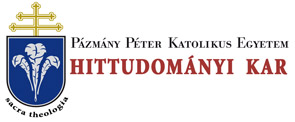Folia Theologica et Canonica 6. 28/20 (2017)
SACRA THEOLOGIA - László Perendy, The application of the term ’brother/sister’ in early Christianity
FOLIA THEOLOGICA ET CANONICA (2017) 37-46 László Perendy THE APPLICATION OF THE TERM ‘BROTHER/S ESTER' IN EARLY CHRISTIANITY* The synoptic gospels, the Acts of the Apostles, and the Pauline letters often name all Christians as brothers. The basis for this is especially the statement of Jesus himself in Mk. 3: 32-35: ‘A crowd was sitting round and word was brought to him: “Your mother and your brothers are outside asking for you.” He replied: “Who is my mother? Who are my brothers?” And looking round at those who were sitting in the circle about him he said, “Here are my mother and my brothers. Whoever does the will of God is my brother, my sister, my mother.’”1 By the use of this term the authors of the New Testament wish to suppress all kinds of differentiation of race and social condition in the Christian community. They also express that the bonds between the members of the Church are stronger than those of blood, especially because in baptism Christians have become the children of the same heavenly Father, so now they all are brothers and sisters.2 A derivative of àôrAcpôç. the word àôC/VcpÔTrjç' (brotherhood) occurs twice in The First Letter of Peter* In 1 Pet. 2: 7 we read: ‘Give due honour to every* A shorter version of this contribution was delivered on l '1 September 2017 at the conference organized by the European Society for Catholic Theology in Strasbourg. 1 The New English Bible. The New Testament, Oxford-Cambridge 1970. 46-47. In Greek Mk 3: 35 runs as follows: oç [yàp] av 7totf|or| tò 9éA.ri|ia toû 9oû, oôxoç àSeXtpôç pou Kat àSeXtpù Kai |if|Trip éaxív. (Nestle-Aland, Novum Testamentum Graece et Latine, Stuttgart 2005. 98). 1 Cf. Hamman, A. - Maritano, M„ Brother/Sister, in Encyclopedia of Ancient Christianity, I. Downers Grove, IL. 2014. 397. 3 Michel Dujarier works out in detail the use of the term â8eA,cpôxr|ç applied to the church in the first three centuries: Dujarier, M., Eglise - Fraternité. L’ecclésiologie du Christ-Frère aux huit premiers siècles. L'Église s'appelle « Fraternité », ! '-Ill‘ siècle, Paris 2013. 4 Michel Dujarier reminds us that the word àSekcpóxrj; never appears in pagan texts written in pre-Christian times. The first Christian text in which it appears is Prima Petri. Although it can be found in some books of the Old Testament (e.g., Zech. 11:14; 1 Macc. 12:10.17), but it either refers to ties of blood or to a political alliance. Actually, it is the result of an incorrect formation of words, because in Greek the suffix ‘-xriç’ should not be added to a noun, but only to an adjective. This is not the case in Latin derivation. In Dujarier’s mind this grammatical error may indicate that this word was coined in a linguistic environment influenced by Latin, e.g., in Rome; cf. Dujarier, M„ Église - Fraternité, 109-111.
